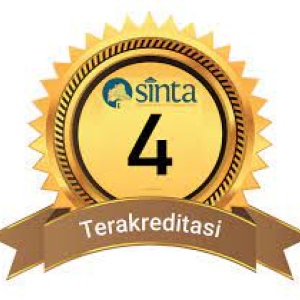Tinjauan Semantik Naskah Nazm Waraqat Karya Shaikh Syarif Al-Din Yahya Al-'Imriti Koleksi Surau Simaung, Sumatra Barat
DOI:
https://doi.org/10.37014/jumantara.v16i1.5347Keywords:
Waraqat, Semantics, Nazm, Manuscript, Usul al-FiqhAbstract
This research aims to translate the book Nazm Waraqat by Shaikh Syarif al-Din Yahya al-'Imriti (890 H), from the Surau Simaung collection, West Sumatra, using the semantic translation method. The purpose of this study is to understand the application of the semantic method in the translation process, the translation techniques used, and to produce a better translation. This study has used descriptive qualitative method. The results show that the application of the semantic method is effective in maintaining the meaning, nuances, and original style of the source text while preserving the poetic style of the nazm (verse). The manuscript analysis found 145 copying errors, including additions, omissions, alterations, and substitutions, indicating the importance of editing the manuscript prior to translation. The use of Molina and Albir's translation techniques, such as borrowing and amplification successfully addressed the challenges in translating specific terms in Usul al-Fiqh. A comparison with previous translations reveals that the semantic method is more accurate in conveying the original meaning and preserving the nazm style. more effective in translating Kitab Nazm Waraqat, as it conveys the original meaning while preserving the characteristics of the nazam. This research results in an improved translation and contributes to the preservation of ancient Islamic Nusantara manuscripts.References
Al-Farisi, Zaka. Pedoman Penerjemahan Arab Indonesia. Bandung: Remaja Rosdakarya, 2011.
Al-Imrithi, Imam Syarafuddin Yahya. Nazham Al-Waraqat. Disunting oleh A. Ammar. Pustaka Arafah, 2020.
Annas, Azwar, Amin Nasir, Miftahul Huda, dan Muthmainnah. Praktis Belajar Arudh dan Qafiyah. Kudus: IAIN Kudus dan Penerbit Nusa Litera Inspirasi, 2021.
Anon. “DREAMSEA Catalog - Manuscript Details.” Diakses 28 Mei 2024. https://www.hmmlcloud.org/dreamsea/detail.php?msid=1409.
Aulia, Pegi, dan Nurizzati Nurizzati. “Alih Aksara Dan Alih Bahasa Kitab Takbir Mimpi Dan Gempa.” Jurnal Bahasa Dan Sastra 8, no. 3 (2020): 146–55. https://doi.org/10.24036/jbs.v8i3.109680.
Basyaiban, Fahmi. “Mengenalkan Islam Dengan Nadhom.” Diambil 16 Mei 2024. https://www.fahmibasyaiban.web.id/2013/01/mengenalkan-islam-dengan-nadhom.html.
Bessie, Polce Aryanto. Metode Penelitian Linguistik Terjemahan. Jakarta: Indeks, 2017.
Dr Muhammad Agus Kurniawan, M. Pd I. “Syi’ir Tanpa Waton Rekonstruksi Budaya Lokal Pada Konteks Tasawuf Di Pondok Pesantren Ahlus Shafa Wal Wafa Simoketawang Wonoayu, Sidoarjo Jawa Timur.” Thesis, Universitas Islam Negeri Raden Fatah, Palembang, 2021.
Fathurahman, Oman. Tarekat Syattariyah Di Minangkabau: Teks Dan Konteks. Jakarta: Prenada Media Group, 2008.
Fathurahman, Oman. Filologi Indonesia: Teori dan Metode (Edisi Revisi). Jakarta: Kencana, 2021.
Fuadi, Zahrul. “Evaluasi Konservasi dan Preservasi Koleksi Manuskrip pada Museum Aceh.” UIN Ar-Raniry Banda Aceh, Banda Aceh, 2019.
Harahap, Nurhayati. Filologi Nusantara: Pengantar ke Arah Penelitian Filologi. Jakarta: Prenada Media, 2021.
Hasbullah, Abdur Rouf. “Konsep Amr Dan Mashlahah Dalam Perspektif Pendidikan Islam: Kajian Tematik Dalam Kitab Waraqat Karya Imam Haramain.” Indonesian Journal of Humanities and Social Sciences 4, no. 1 (2023): 125–48. https://doi.org/10.33367/ijhass.v4i1.4150.
Hidayatullah, Moch Syarif. Jembatan Kata: Seluk Beluk Penerjemahan Arab Indonesia. Jakarta: Grasindo, 2017.
Hoed, Benny Hoedoro. Penerjemahan dan Kebudayaan. Bandung: Pustaka Jaya, 2006.
Islam, M. Adib Misbachul. Puisi Perlawanan dari Pesantren: Nazam Tarekat Karya KH. Ahmad ar-Rifai Kalisalak. Tangerang Selatan: Transpustaka, 2016.
Khadjah, Ute Lies Siti, Fitri Perdana, Desak Gde Delonix Regia Kirana Sarasvathi, dan Yunus Winoto. “Proses Digitalisasi Naskah Kuno Sebagai Pelestarian Informasi Di Museum Bandar Cimanuk, Indramayu.” Pustaka Karya: Jurnal Ilmiah Ilmu Perpustakaan Dan Informasi 9, no. 1 (2021): 45–57.
Munawwir, Ahmad Warson. Kamus Al Munawwir Arab-Indonesia. Yogyakarta: Pustaka Progresif, 1984.
Mustagpirin. “Biografi: Syeikh Syarifuddin Yahya Al-Imrithy | Pengarang Kitab Nadzom Imrithy.” Diambil 18 Mei 2024. http://musyawarahalat.blogspot.com/2016/11/biografi-ulama-syeikh-syarifuddin-yahya.html.
Partanto, Pius, dan M. Dahlan Barry. Kamus Ilmiah Populer. Surabaya: Aloka, 2001.
Pramono, Pramono. “Praktik Jual Beli Naskah Dan Upaya Pelestarian Naskah Melayu-Minangkabau Di Sumatera Barat.” Jurnal Ilmu Budaya 5, no. 2 (2009): 1–13. https://doi.org/10.31849/jib.v5i2.715.
Pramono, Pramono, Muchlis Awwali, Donny Eros, Rafiq Gusly Abdul Razaq Razaq, Surya Selfika, dan Nur Ahmad Salman Herbowo. “Penerapan Naskah Kuno Dan Pemanfaatannya Untuk Pengembangan Wisata Religi Ziarah Di Surau Simaung Kabupaten Sijunjung.” Jurnal Ilmiah Pengembangan Dan Penerapan Ipteks 29, no. 4 (2023): 488–96.
Shamad, Irhash A., dan Danil M. Chaniago. Islam dan Praksis Kultural Masyarakat Minangkabau. Palembang: NoerFikri, 2022.
Taufiqurrahman, Taufiqurrahman, dan Ahmad Taufik Hidayat. “Konservasi, Digitalisasi, dan Penyuluhan Naskah Kuno di Surau Manggopoh Kabupaten Agam.” Aksiologiya: Jurnal Pengabdian Kepada Masyarakat 6, no. 1 (2022): 157–72. https://doi.org/10.30651/aks.v6i1.5377.
Downloads
Published
Issue
Section
License
Copyright (c) 2025 Aura Mustika Sari, Abdullah Maulani, Darsita Suparno

This work is licensed under a Creative Commons Attribution-ShareAlike 4.0 International License.
- This statement is the author's commitment to respect copyright, both in terms of citing other people's work and utilizing journal content. If necessary, the author can send an Authenticity Statement of Article stating that "this work is the author's original idea and has never been sent to another publisher and published in any publication"
- The author retains copyright.
- The moral rights of publication belong to the author.
- Formal legal aspects in the use of journal publications refer to the Creative Commons Attribution-ShareAlike 4.0 (CC BY-SA) license, which means that journal content can be used freely for any purpose.










